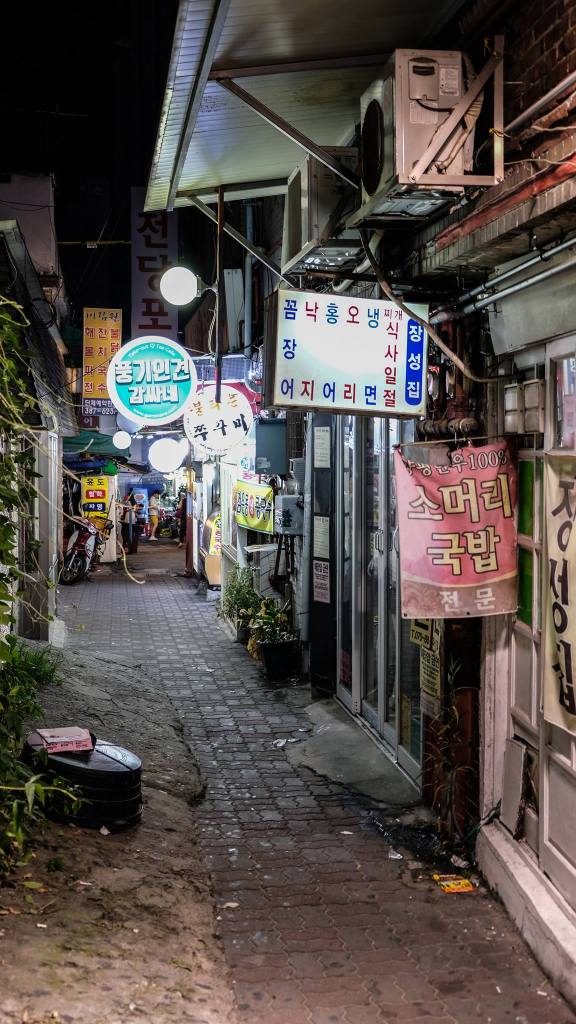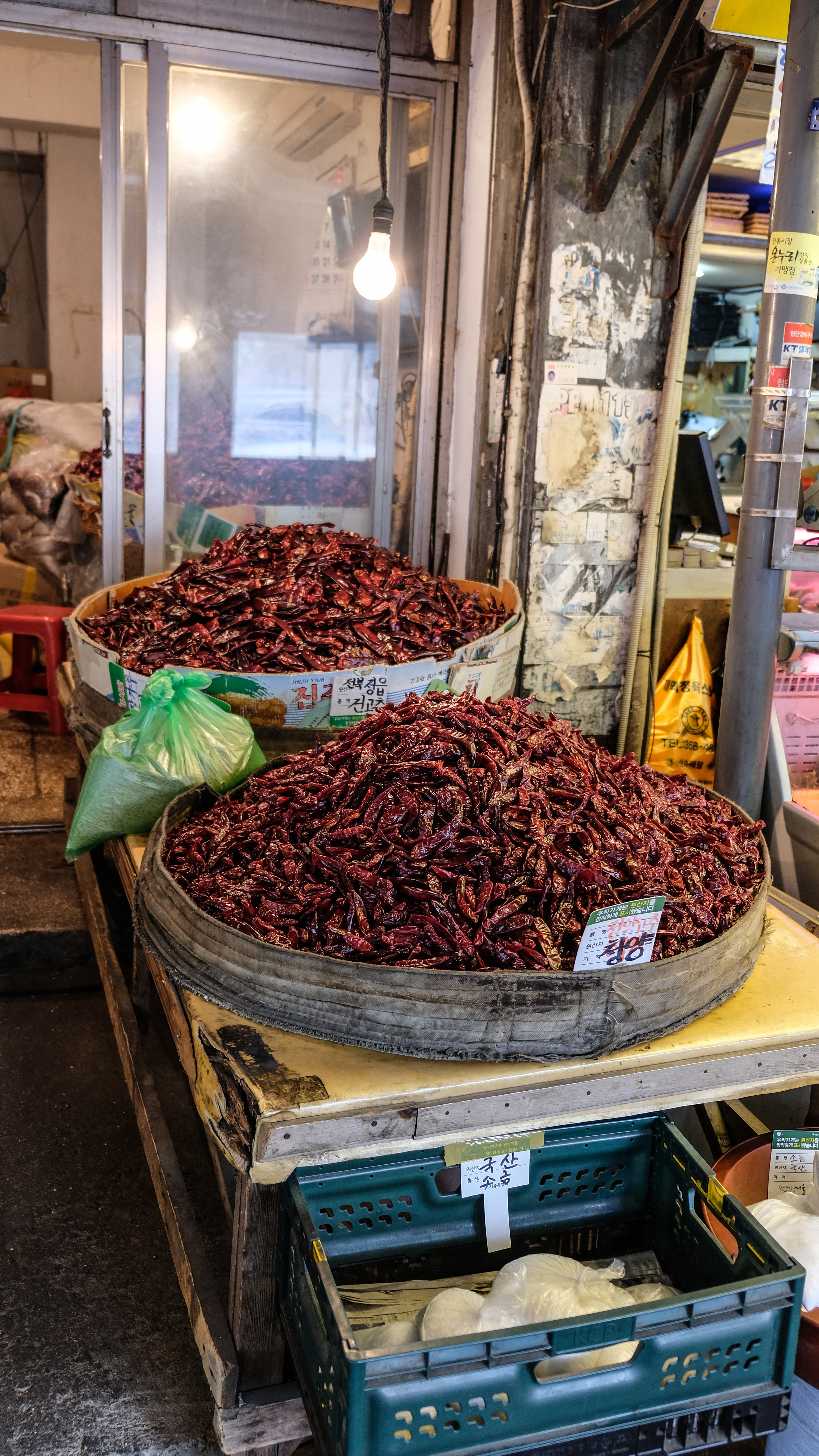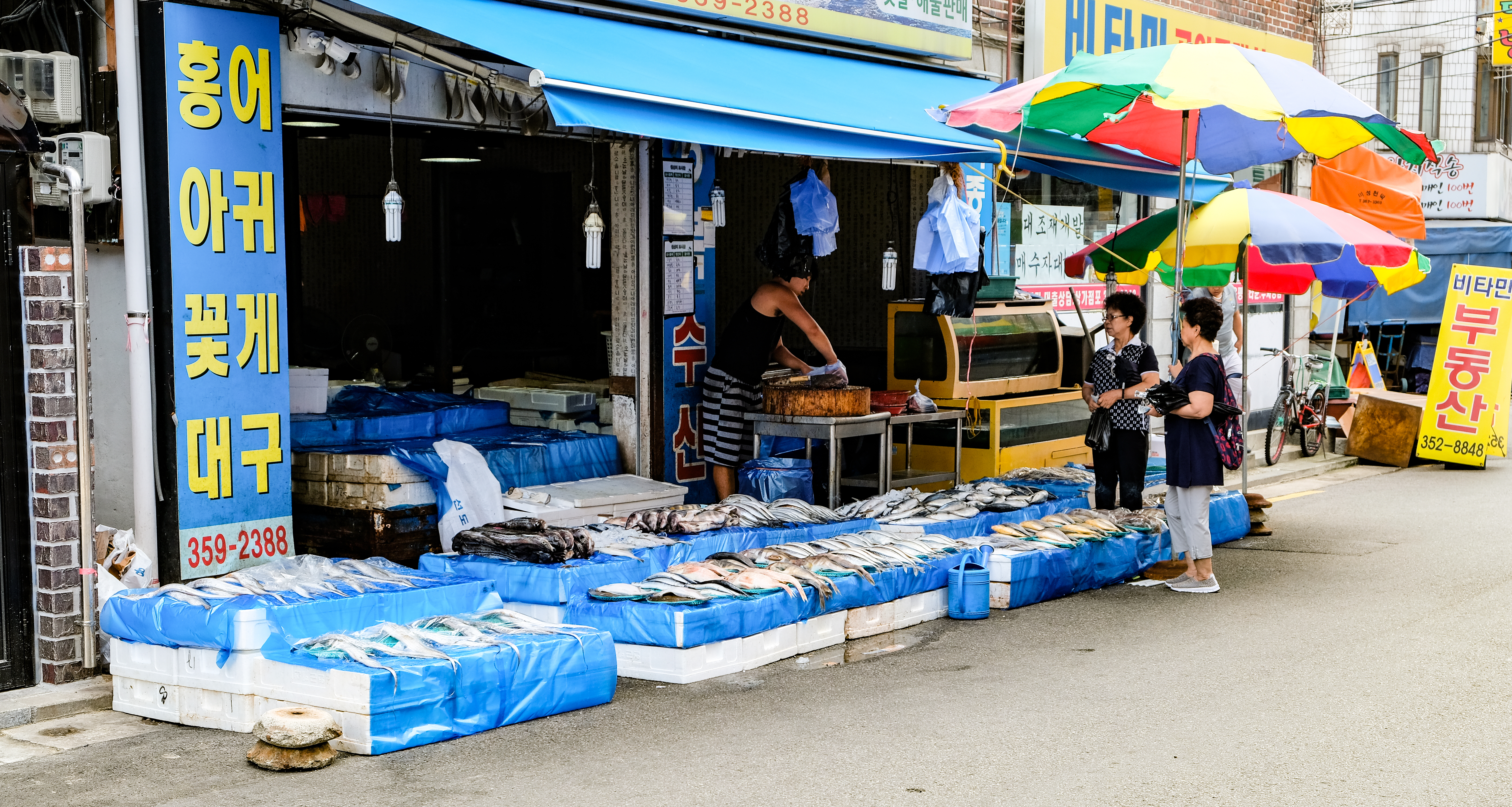The women of Yeonsinnae. I wrote about them last year when we were visiting for a few months over summer. We are back. Our granddaughter has turned one year old. Indeed, here in Korea, that is considered to be two. Confusing but true. So, we are back in our old stomping ground enjoying the contrast between our quiet (possibly sedate) life in the bay back home, compared to the teeming liveliness of this place.

It’s not difficult to imagine the contrast when you consider the population of New Zealand and the concentration of people who live in Seoul alone. Population of the wider metropolis of this area is estimated to be 25 million and the concentration in Seoul city around 10.5 million. Yeonsinnae is about 15 minutes on the metro from downtown Seoul. We love this place. I can’t find up to date population statistics for this area, but it is in the wider area of Eunpyeong, an upcoming and rapidly expanding district of Seoul.
What I have observed since our visit last year, is the constant change happening here. Our favourite café or restaurant might still be here, but it’s menu will have changed, or it has new owners, or the time of opening and closing is now different. It feels like a small wave of ‘gentrification’ beginning as new apartment buildings are springing up.
But Yeonsinnae street market, in the heart of this place, is the same. The women who sit on the pavement, some on cardboard and some on more comfy chairs, are the same. I recognise them. There is one, tall, elegant older woman who has the loveliest smile. She is near to the station. I’ve now become embarrassed by my privilege of being able to walk past her so frequently, footloose, fancy-free, going where I wish, as she sits day after day in the same spot. I’ve taken to taking side streets now to avoid having to smile at her, as it has begun to feel patronising. I’m not assuming she’s unhappy, but I am made uncomfortable. In contrast, there are older women, more doubled over, less able, and sadder looking who I observe with less guilt, because I haven’t made a personal connection.

The thing about being in a thriving, ostensibly ‘working class’ area of Seoul (compared to downtown where glamour abounds) is you are confronted with both the glorious immediacy of human activity as well as many of the tragedies. I’ve come to notice more and more the extraordinary tenacity of the disabled in this community. It’s inevitable in a community with such a wide cross section of people from grandmothers to young families to working executives, that too there will be the less able. A city this size does not bend for the less able, they bend to it. I am always amazed at the extraordinary resilience and independence of the less able negotiating this busy place. In particular, the metro takes no prisoners. Nobody waits should you stumble and the rush to the elevators by young mums and the elderly is a stampede with no regard for age or infirmity.
We have often chuckled as we are elbowed out of the way at the elevator (my daughter-in-law and me) by feisty old men and women, only to find when we finally squeeze into the tiny space left, that these aggressive old people, turn into clucking loving chucking under the chin baby admirers… who feel free to practically pinch the cheeks of my granddaughter (although her mother is certain they will not)… our eyes meet across the baby buggy in delightful recognition of the dichotomy.

The sky here is not the bright blue of home, and the air at times questionable. But what is not in question, is the pulsing, lively, fascinating hum of humanity. We’ve been watching a Korean political drama about the gentrification of districts, removing local markets, and indeed, we were visiting Hongdae the other day (now quite gentrified)…. It’s sad to see big shopping malls with generic labels and big glass shopfronts, repeating themselves…. Whereas the colour and vibrancy of Yeonsinnae and nearby Bulgwang markets are unsurpassed.



